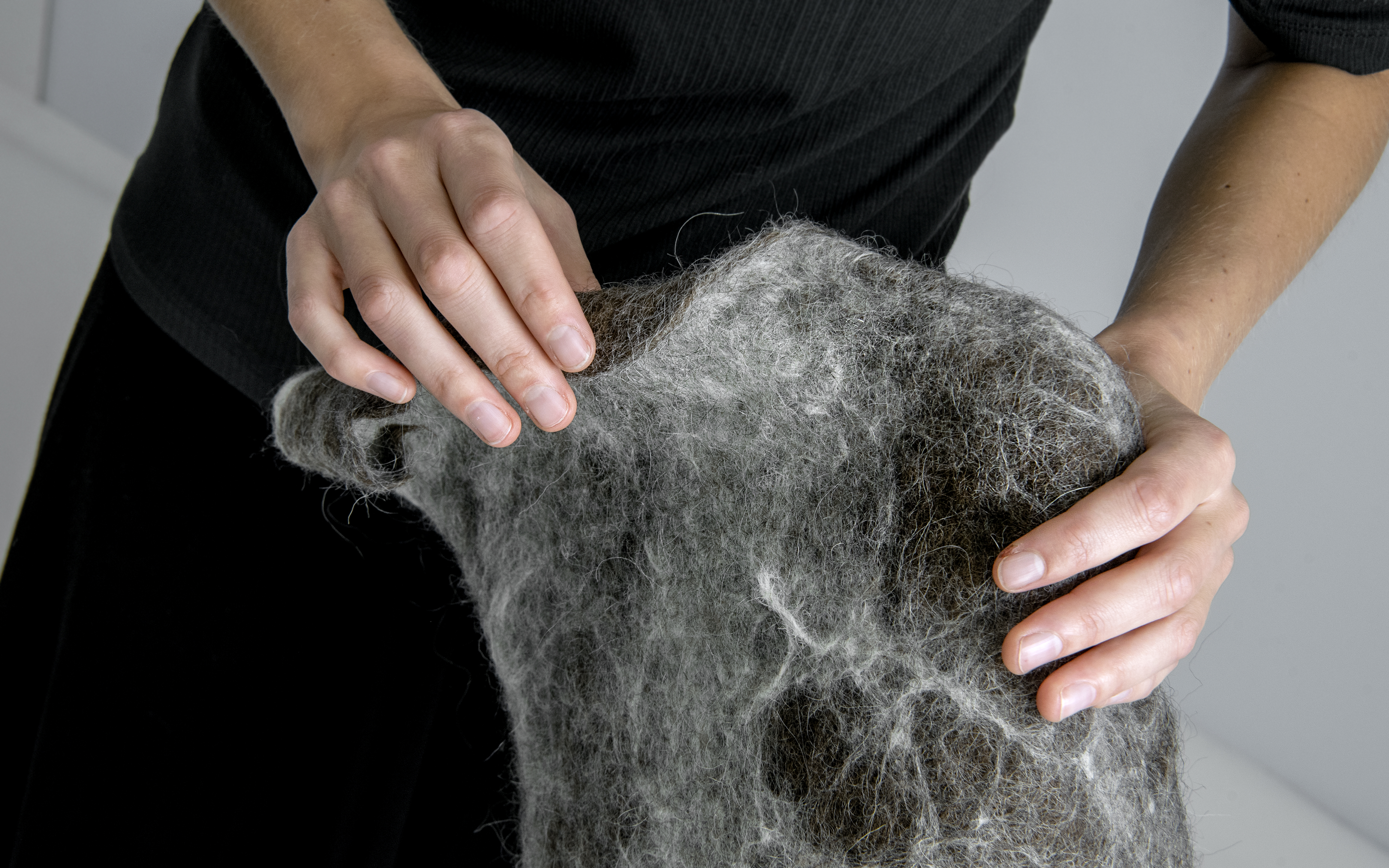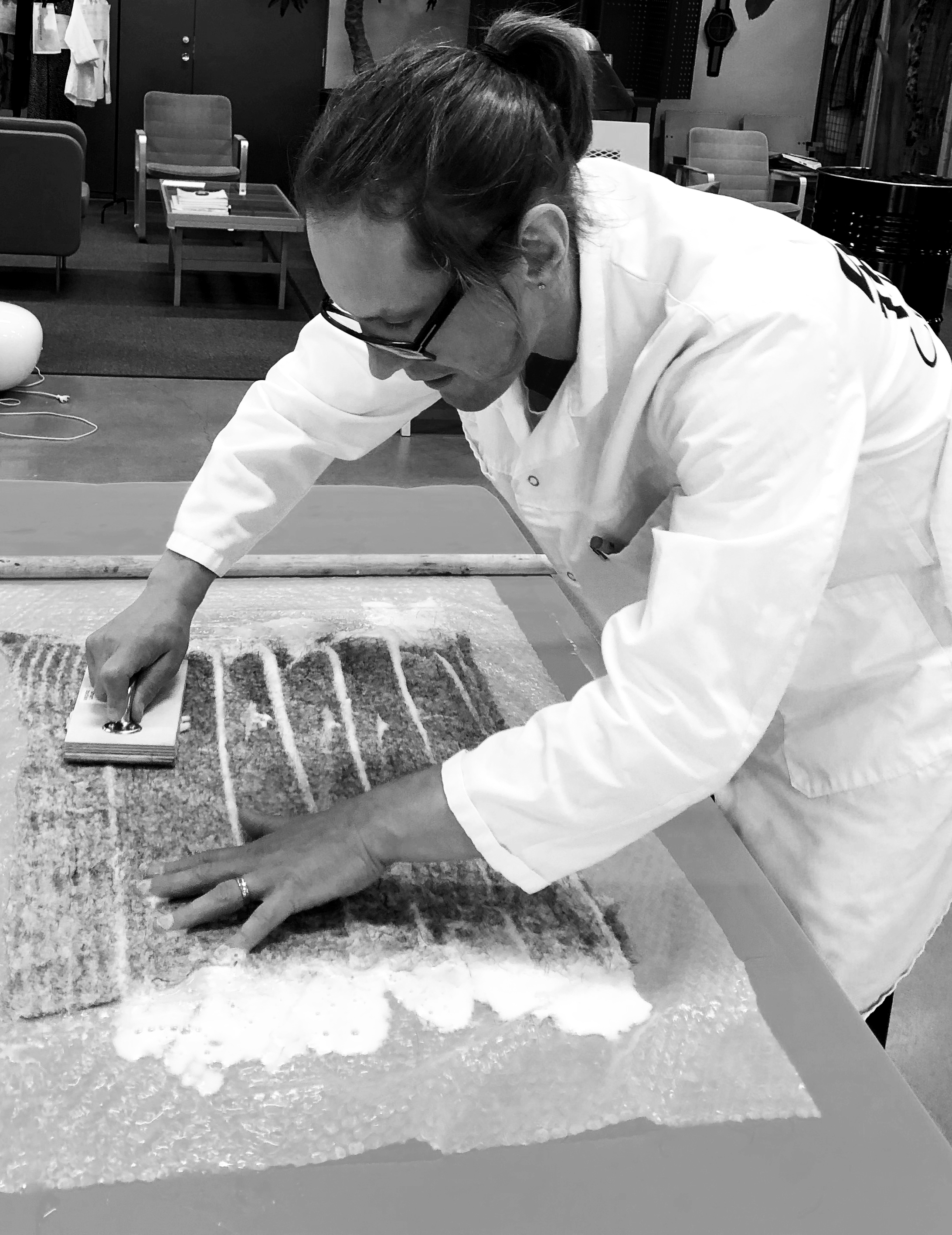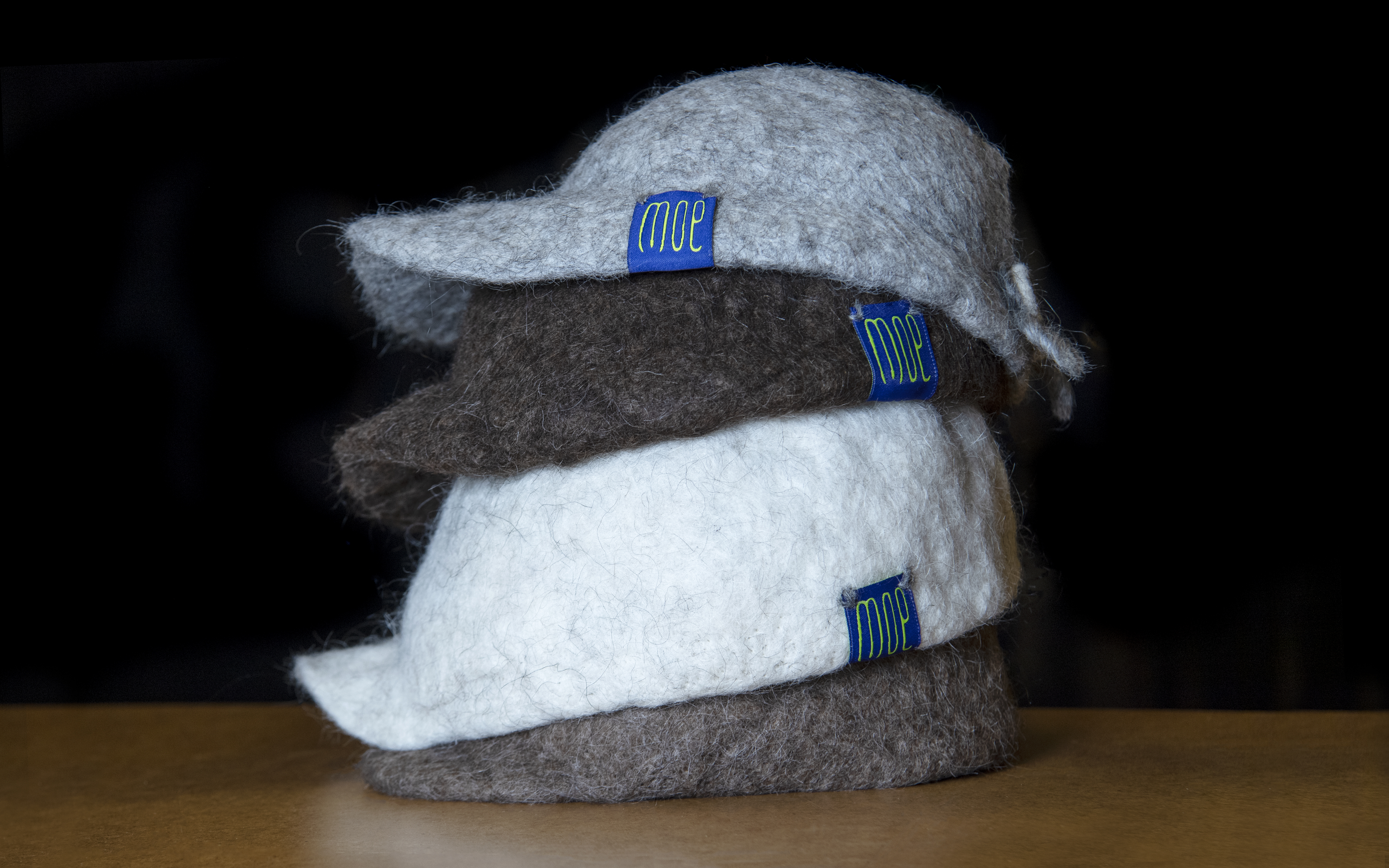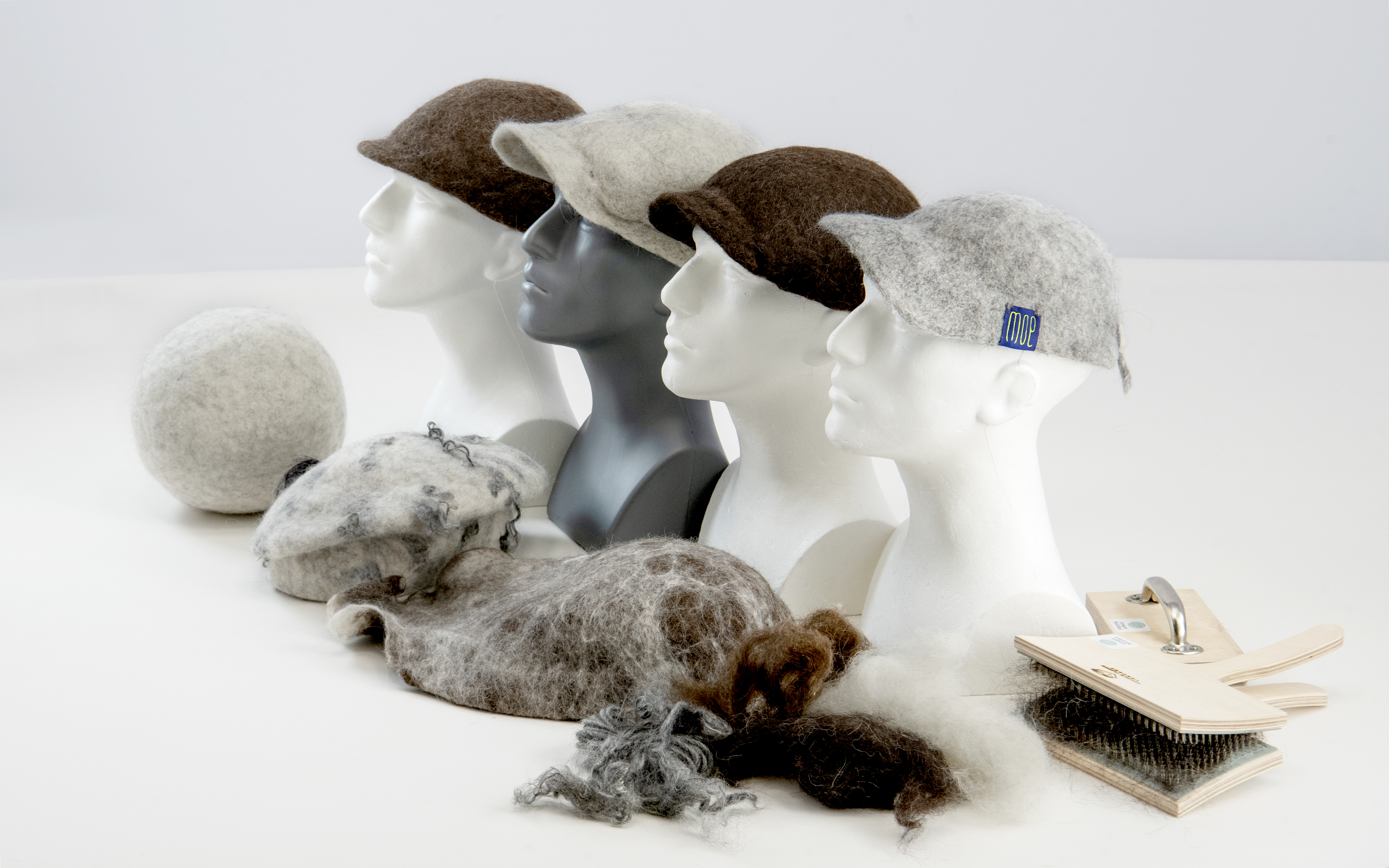
- Casted Wool Hat
- No Waste

The idea was to explore felting of wool, especially wet felting, to cast hats having different wool material characteristics. Focus was on controlling the felting process to create reproducible casted hats with determined shape and character, particularly to create a wool material that is durable and yet thin enough to function as wear. Since the felting technique was in focus, many different hats were created with different thickness, shapes and functionality.
100 % Swedish wool
Moe, Moenism AB
Moe develops wear focusing on the technical and cultural life span to create durable, repairable, easy to disassemble garments with a non-fashionable design to last culturally. Moe uses 100 % wool, leftover fabrics from EU production, because of its inherent high-performance properties relative to high water-consuming cotton fabric. The idea was to continue explore the technical and cultural boundaries of developing a Swedish wool fabric made of Swedish wool.










Bio-based materials and 3D-printed clothes that do not last very long. Could this be the answer to guilt-free consumption?
Maybe we can remove the ownership of garments and rather see the garments as a temporary service, like the shift from buying CDs to streaming music. In this way, the garments can be manufactured when the customer needs it, and be disposed of in household waste bins and become energy, not waste.
The material developed by Guringo Design Studio is called Streamateria and is made much like how a leaf is created – with its vein-like structure deciding the shape and a membrane tissue to complete it. The material is designed to die from the beginning, a perspective inspired by the ecosystem in the forest where there are no waste, only raw material for new resources.
All group objects:
The origin and production of the materials that make up a product as well as the chemicals used to give the product its characteristics will greatly affect its environmental performance. Among the most important challenges are the substitution of fossil or other resource inefficient raw materials, phasing out harmful chemicals and implementing more efficient reuse/recycling methods at end-of-life.
In this knowledge area, research and development regarding the choice of materials, material combinations, and chemical substances in textile goods are dealt with, as well as possibilities for improved collection, sorting and material recycling.
The textile industry and the research community are well aware and very active when it comes to innovations in these fields. This holds promise for future possibilities of large scale implementation of renewable or recycled materials, as well as alternative, environmentally benign chemicals.
Each decision during product development affects sustainability and circularity. To develop products with lower environmental impact, the design team needs to be well aware of each component and process, and their individual and combined effect on the final product and its longevity.
One challenge is having comprehensive knowledge regarding sutainability when it comes to all of the components and processes that are a part of the production and lifetime of the garment. An additional challenge is implementing alternative design methods that do not require virgin components. Ongoing research inspires and shows methods to re-make existing products to have new functionalities and designs with an upgraded look.
With higher traceability when it comes to materials, components, and processes, there are increased possibilities for more conscious decisions. If communicated well, this gives the consumer a better basis for decisions.